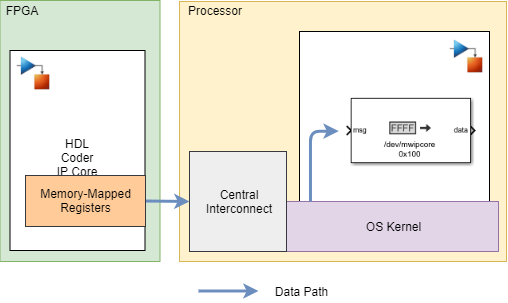Register Read
Read data from a register region on the specified IP core
Libraries:
SoC Blockset /
Processor I/O
Description
The Register Read block reads data from a register region on the specified IP core. In simulation, a timer-driven or event-driven task subsystem contains the Register Read block. The data signals from the Register Read block connect to the Register Channel block managing those registers and their transactions.
When developing or analyzing the software side of an SoC application, the Register Read block can be connected to an IO Data Source block. In this configuration, the IO Data Source block provides either previously recorded or artificial data, enabling a more directed simulation of the software and processor side of the application, without need to explicitly model the hardware and memory interactions.
Examples
Ports
Input
Output
Parameters
Extended Capabilities
Version History
Introduced in R2019a


